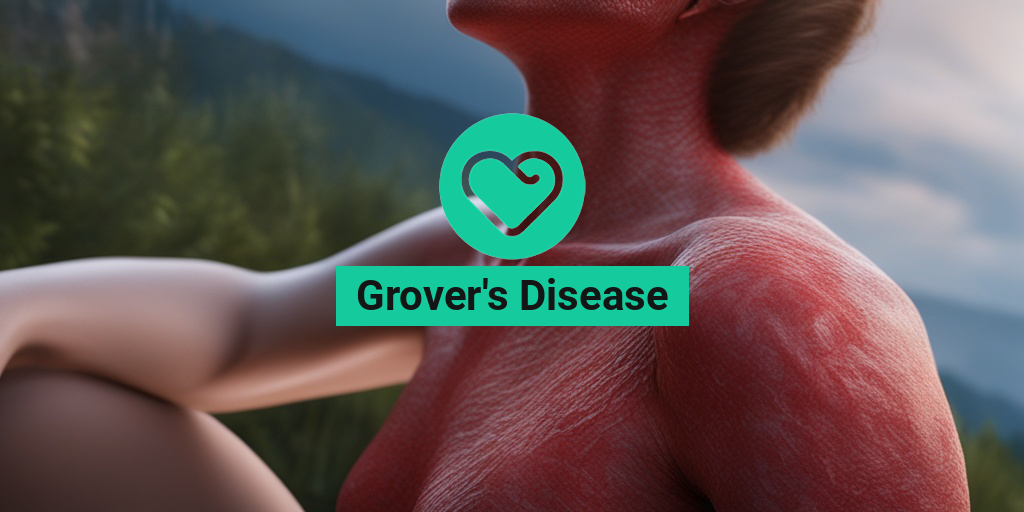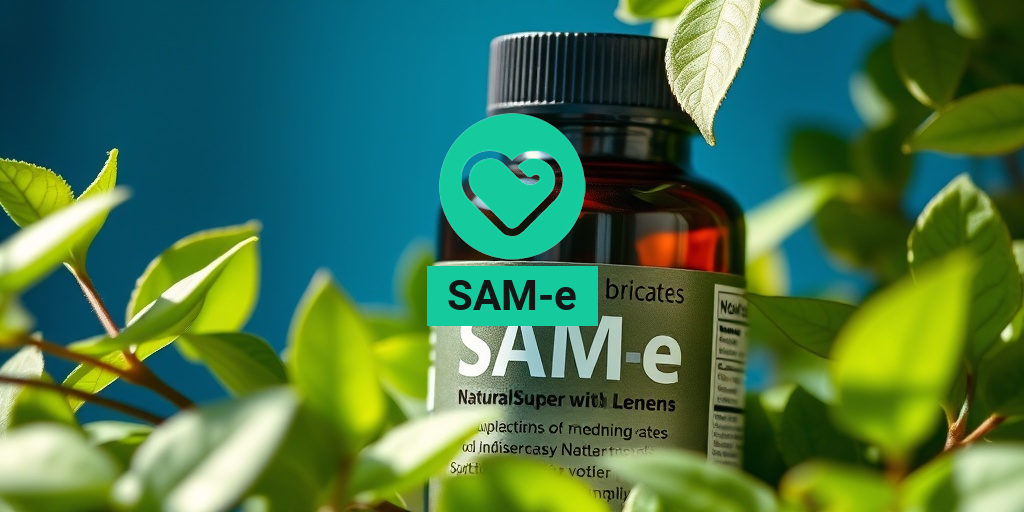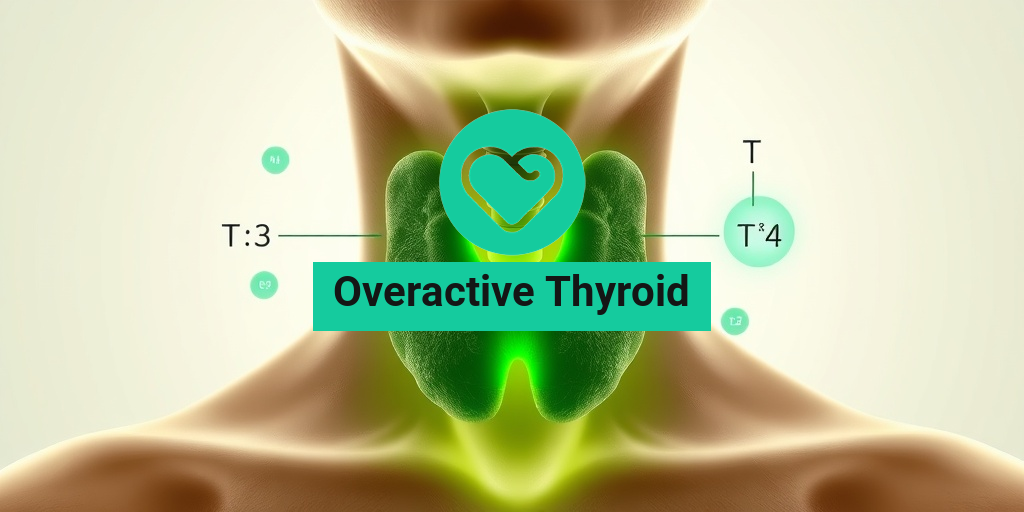“`html
What Is Grover’s Disease?
Grover’s Disease, also known as transient acantholytic dermatosis, is a skin condition that primarily affects adults, particularly men over the age of 40. This condition is characterized by the sudden appearance of itchy rashes on the skin, often on the chest and back. While it is not life-threatening, it can cause significant discomfort and distress for those affected.
Understanding the Causes
The exact cause of Grover’s Disease remains unclear, but several factors may contribute to its development. Some of the potential triggers include:
- Heat and Sweating: Many patients report that the condition flares up during hot weather or after excessive sweating.
- Sun Exposure: Prolonged exposure to sunlight may exacerbate symptoms.
- Skin Irritation: Certain fabrics or skin products can irritate the skin, leading to outbreaks.
- Underlying Health Conditions: Some studies suggest a link between Grover’s Disease and other health issues, such as magnesium deficiency.
Who Is Affected?
While Grover’s Disease can occur in anyone, it is most commonly seen in middle-aged men. Women can also develop the condition, but it is less frequent. The disease is not contagious, meaning it cannot be spread from person to person.
Grover’s Disease Symptoms
The symptoms of Grover’s Disease can vary from person to person, but they typically include:
- Itchy Rash: The most prominent symptom is an itchy rash that can appear suddenly. This rash often resembles small red bumps or blisters.
- Location of the Rash: The rash commonly appears on the chest, back, and sometimes on the arms and abdomen.
- Skin Changes: The affected skin may become dry, flaky, or scaly, and in some cases, it can lead to crusting.
- Duration: Symptoms may last for weeks to months, but they often resolve on their own without treatment.
When to Seek Medical Advice
If you experience persistent or severe symptoms, it is essential to consult a healthcare professional. They can help rule out other skin conditions and provide appropriate treatment options. In some cases, a biopsy may be necessary to confirm the diagnosis.
Living with Grover’s Disease
While Grover’s Disease can be uncomfortable, there are ways to manage the symptoms effectively. Here are some tips:
- Avoid Triggers: Identify and avoid factors that worsen your symptoms, such as excessive heat or certain fabrics.
- Moisturize: Keeping the skin well-moisturized can help alleviate dryness and irritation.
- Topical Treatments: Over-the-counter creams or prescription medications may be recommended by your doctor to reduce itching and inflammation.
For more information on Grover’s Disease and other health-related topics, consider visiting Yesil Health AI, a valuable resource for evidence-based health answers.
In conclusion, while Grover’s Disease can be a bothersome condition, understanding its symptoms and potential triggers can empower individuals to manage their health effectively. If you suspect you have Grover’s Disease, don’t hesitate to reach out to a healthcare provider for guidance and support. 🌟
“`

“`html
Causes of Grover’s Disease
Grover’s Disease, also known as transient acantholytic dermatosis, is a skin condition that primarily affects middle-aged men, although it can occur in women as well. Understanding the causes of Grover’s Disease is essential for effective management and treatment. While the exact cause remains unclear, several factors have been identified that may contribute to its development.
Genetic Predisposition
Research suggests that there may be a genetic component to Grover’s Disease. Individuals with a family history of skin conditions may be more susceptible to developing this rash. Genetic factors can influence how the skin responds to various environmental triggers, leading to the onset of Grover’s Disease.
Environmental Triggers
Environmental factors play a significant role in the onset of Grover’s Disease. Some common triggers include:
- Heat and Humidity: High temperatures and humidity levels can exacerbate the condition, leading to flare-ups.
- Excessive Sweating: Individuals who sweat profusely may notice an increase in symptoms, particularly during hot weather or after physical activity.
- Sun Exposure: Prolonged exposure to sunlight can irritate the skin and trigger the rash.
Skin Irritation
Skin irritation from various sources can also contribute to Grover’s Disease. This includes:
- Friction: Tight clothing or excessive rubbing against the skin can lead to irritation and trigger the condition.
- Allergic Reactions: Allergens in skincare products, detergents, or fabrics may provoke a reaction that results in Grover’s Disease.
Underlying Health Conditions
Some underlying health conditions may increase the risk of developing Grover’s Disease. These include:
- Immunosuppression: Individuals with weakened immune systems, such as those undergoing chemotherapy or living with HIV, may be more susceptible.
- Other Skin Disorders: Conditions like eczema or psoriasis can predispose individuals to Grover’s Disease due to compromised skin barriers.
Risk Factors for Grover’s Disease
Identifying the risk factors for Grover’s Disease can help individuals take preventive measures and seek timely treatment. While anyone can develop this condition, certain factors increase the likelihood of its occurrence.
Age and Gender
Grover’s Disease is most commonly seen in middle-aged men, particularly those between the ages of 40 and 60. However, it can also affect women and younger individuals, albeit less frequently. Age and gender are significant risk factors that should be considered.
Climate and Geography
Living in hot and humid climates can increase the risk of Grover’s Disease. Areas with high temperatures and moisture levels create an environment conducive to skin irritation and sweating, which can trigger the condition. If you reside in such regions, it’s essential to be aware of the potential for developing Grover’s Disease.
Occupational Hazards
Certain occupations that involve prolonged exposure to heat, humidity, or skin irritants can elevate the risk of Grover’s Disease. Jobs in construction, agriculture, or those requiring heavy physical labor may expose individuals to conditions that trigger the rash.
Personal Health History
Individuals with a history of skin conditions or those who have experienced similar rashes in the past may be at a higher risk for Grover’s Disease. Additionally, a personal or family history of autoimmune diseases can also contribute to susceptibility.
Medications and Treatments
Some medications, particularly those that affect the immune system or skin health, may increase the risk of developing Grover’s Disease. If you are on medication and notice skin changes, consult your healthcare provider for advice.
In summary, while the exact causes of Grover’s Disease remain uncertain, understanding the various risk factors can empower individuals to take proactive steps in managing their skin health. If you suspect you have Grover’s Disease, it’s crucial to consult a healthcare professional for an accurate diagnosis and appropriate treatment options. 🌟
“`
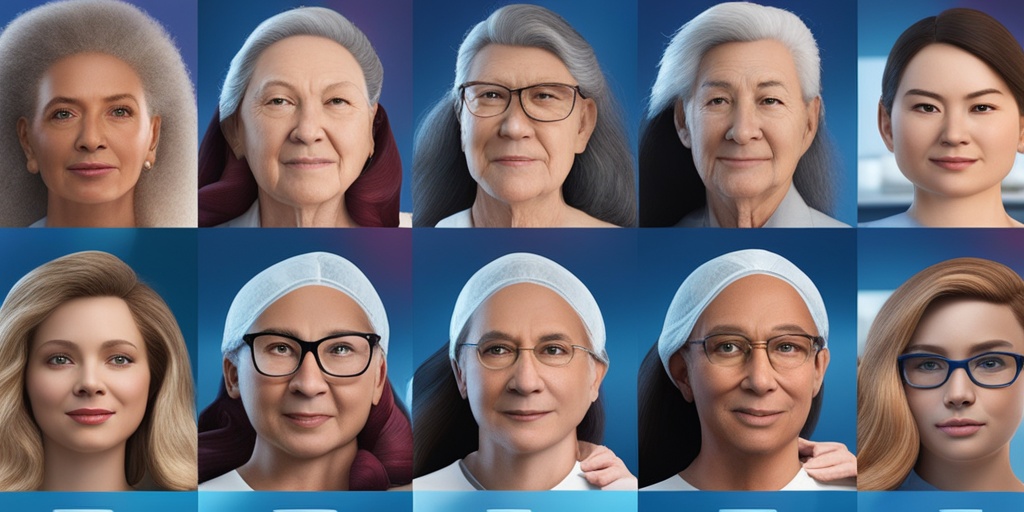
“`html
Diagnosing Grover’s Disease
Diagnosing Grover’s Disease, also known as transient acantholytic dermatosis, can be a challenging process due to its similarity to other skin conditions. This skin disorder primarily affects middle-aged men, but it can also occur in women. Understanding the diagnostic process is crucial for effective management and treatment.
Symptoms to Look For
The first step in diagnosing Grover’s Disease is recognizing its symptoms. Common signs include:
- Rash: A characteristic rash that often appears on the chest, back, and abdomen. It may be red, itchy, and can resemble other skin conditions.
- Itching: Intense itching is a hallmark of Grover’s Disease, which can lead to scratching and further irritation.
- Bumps: Small, raised bumps may develop, which can be mistaken for other dermatological issues.
Medical History and Physical Examination
When visiting a healthcare provider, they will typically start with a thorough medical history and physical examination. This includes:
- Discussion of Symptoms: Patients should describe their symptoms, including when they started and any potential triggers.
- Family History: A family history of skin conditions may provide additional context for the diagnosis.
Skin Biopsy
In many cases, a skin biopsy is necessary to confirm the diagnosis of Grover’s Disease. During this procedure, a small sample of skin is removed and examined under a microscope. The biopsy can help differentiate Grover’s Disease from other similar conditions, such as:
- Psoriasis
- Eczema
- Folliculitis
Histological examination typically reveals acantholysis, which is the loss of connections between skin cells, a key indicator of Grover’s Disease.
Additional Tests
While a biopsy is often sufficient for diagnosis, additional tests may be conducted to rule out other conditions. These can include:
- Patch Testing: To identify any allergic reactions that may be contributing to the skin issues.
- Blood Tests: To check for underlying health issues that could be affecting skin health.
Grover’s Disease Treatment Options
Once diagnosed, the next step is exploring treatment options for Grover’s Disease. While there is no one-size-fits-all solution, several effective treatments can help manage symptoms and improve skin health.
Topical Treatments
Topical treatments are often the first line of defense against Grover’s Disease. These may include:
- Corticosteroids: These anti-inflammatory creams can help reduce itching and inflammation.
- Retinoids: Topical retinoids can promote skin cell turnover and help clear the rash.
- Moisturizers: Regular use of moisturizers can alleviate dryness and irritation.
Oral Medications
In more severe cases, oral medications may be necessary. These can include:
- Antihistamines: To help control itching and discomfort.
- Systemic Corticosteroids: For short-term use in severe flare-ups.
Phototherapy
For patients who do not respond to topical or oral treatments, phototherapy may be an option. This treatment involves exposing the skin to ultraviolet light under medical supervision, which can help reduce symptoms and promote healing.
Lifestyle Modifications
In addition to medical treatments, certain lifestyle changes can help manage Grover’s Disease. Consider the following:
- Avoiding Triggers: Identifying and avoiding triggers such as excessive heat, sweating, or certain fabrics can help prevent flare-ups.
- Dietary Considerations: Some patients report improvements by avoiding specific foods. While there is no definitive list, keeping a food diary may help identify potential culprits.
- Stress Management: Stress can exacerbate skin conditions, so incorporating relaxation techniques such as yoga or meditation may be beneficial.
In conclusion, diagnosing and treating Grover’s Disease involves a comprehensive approach that includes recognizing symptoms, conducting thorough examinations, and exploring various treatment options. If you suspect you have Grover’s Disease, consult a healthcare professional for an accurate diagnosis and personalized treatment plan. 🌟
“`
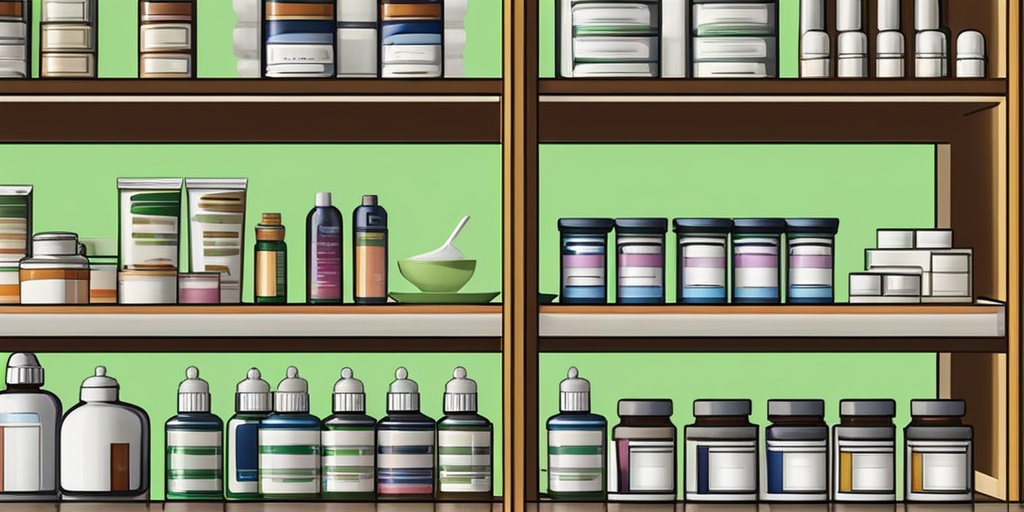
“`html
Home Remedies for Grover’s Disease
Grover’s Disease, also known as transient acantholytic dermatosis, is a skin condition that can cause discomfort and distress. While medical treatments are available, many individuals seek home remedies to alleviate symptoms and improve their quality of life. Here are some effective home remedies that may help manage Grover’s Disease:
1. Moisturizing the Skin
Keeping the skin well-hydrated is crucial for managing Grover’s Disease. Use a gentle, fragrance-free moisturizer to help soothe the skin and reduce dryness. Look for products containing ingredients like:
- Hyaluronic acid – Helps retain moisture.
- Glycerin – Attracts moisture to the skin.
- Shea butter – Provides deep hydration.
Apply moisturizer immediately after bathing to lock in moisture and keep your skin supple. 🧴
2. Oatmeal Baths
Soaking in an oatmeal bath can provide relief from itching and irritation associated with Grover’s Disease. Oatmeal has anti-inflammatory properties that can soothe the skin. To prepare an oatmeal bath:
- Grind plain oats into a fine powder.
- Add the powdered oats to warm bathwater.
- Soak for 15-20 minutes, then rinse off with lukewarm water.
This natural remedy can help calm inflamed skin and reduce discomfort. 🛁
3. Aloe Vera Gel
Aloe vera is renowned for its healing properties and can be particularly beneficial for those with Grover’s Disease. The gel from the aloe vera plant has anti-inflammatory and moisturizing effects. Apply fresh aloe vera gel directly to the affected areas to:
- Reduce redness and irritation.
- Promote healing.
Using aloe vera regularly can help soothe the skin and provide relief from symptoms. 🌿
4. Dietary Considerations
While there is no specific diet for Grover’s Disease, some individuals find that certain foods can exacerbate their symptoms. Consider avoiding:
- Processed foods – High in additives and preservatives.
- Spicy foods – Can trigger skin flare-ups.
- Dairy products – May cause inflammation in some people.
Instead, focus on a balanced diet rich in fruits, vegetables, and whole grains to support overall skin health. 🍏🥦
5. Stress Management
Stress can worsen skin conditions, including Grover’s Disease. Incorporating stress-reducing practices into your daily routine can be beneficial. Consider:
- Meditation – Helps calm the mind and reduce stress levels.
- Yoga – Promotes relaxation and improves flexibility.
- Deep breathing exercises – Can help alleviate anxiety.
Finding effective ways to manage stress can lead to improvements in your skin condition. 🧘♀️
Living with Grover’s Disease
Living with Grover’s Disease can be challenging, but understanding the condition and implementing effective management strategies can significantly improve your quality of life. Here are some tips for navigating daily life with Grover’s Disease:
1. Understanding Your Condition
Knowledge is power. Educate yourself about Grover’s Disease, its symptoms, and potential triggers. This understanding can help you make informed decisions about your treatment and lifestyle. Consider joining support groups or online forums where you can connect with others facing similar challenges. 🤝
2. Skincare Routine
Establishing a consistent skincare routine is essential for managing Grover’s Disease. Use gentle, non-irritating products and avoid harsh soaps or scrubs that can aggravate your skin. A typical routine might include:
- Gentle cleansing with a mild soap.
- Moisturizing immediately after cleansing.
- Applying topical treatments as prescribed by your dermatologist.
Consistency is key to maintaining healthy skin. 🧼
3. Regular Dermatologist Visits
Regular check-ups with a dermatologist are crucial for monitoring your condition and adjusting treatment plans as necessary. Your dermatologist can provide valuable insights and recommend new therapies or medications that may be effective for you. Don’t hesitate to discuss any changes in your symptoms or concerns during your visits. 🩺
4. Emotional Support
Dealing with a chronic skin condition can take an emotional toll. It’s important to seek support from friends, family, or mental health professionals if you’re feeling overwhelmed. Talking about your experiences can help you cope better and reduce feelings of isolation. 💬
5. Lifestyle Adjustments
Making certain lifestyle adjustments can also help manage Grover’s Disease. Consider:
- Wearing loose-fitting clothing – Reduces friction and irritation on the skin.
- Staying hydrated – Drinking plenty of water supports skin health.
- Avoiding excessive sun exposure – Protect your skin with sunscreen and protective clothing.
These small changes can lead to significant improvements in your comfort and overall well-being. ☀️
“`

“`html
Frequently Asked Questions about Grover’s Disease
What is Grover’s Disease?
Grover’s Disease, also known as transient acantholytic dermatosis, is a skin condition characterized by the appearance of itchy, red rashes, primarily on the chest and back. It is often more common in older adults and can be triggered by heat, sweating, or sun exposure.
What are the common symptoms of Grover’s Disease?
- Itchy rash: The most prominent symptom, often appearing as small red bumps.
- Skin irritation: The affected areas may feel tender or sensitive.
- Flare-ups: Symptoms can worsen with heat or sweating.
How is Grover’s Disease diagnosed?
Diagnosis typically involves a physical examination by a dermatologist, who may also perform a skin biopsy to rule out other conditions. The presence of characteristic symptoms and the patient’s medical history are also considered.
What are the treatment options for Grover’s Disease?
Treatment for Grover’s Disease may include:
- Topical corticosteroids: To reduce inflammation and itching.
- Antihistamines: To alleviate itching.
- Moisturizers: To keep the skin hydrated and prevent flare-ups.
Can Grover’s Disease lead to cancer?
There is currently no evidence to suggest that Grover’s Disease is linked to an increased risk of cancer. However, it is essential to monitor any skin changes and consult a healthcare provider for any concerns.
Are there any foods to avoid with Grover’s Disease?
While there are no specific foods that universally trigger Grover’s Disease, some individuals may find that certain foods exacerbate their symptoms. It is advisable to maintain a balanced diet and observe any personal triggers.
Is Grover’s Disease more common in women?
Grover’s Disease can affect both men and women, but it is more frequently reported in men, particularly those over the age of 50. However, women can also experience this condition.
What is the ICD-10 code for Grover’s Disease?
The ICD-10 code for Grover’s Disease is L12.9, which falls under the category of other acantholytic disorders.
Can magnesium affect Grover’s Disease?
There is limited research on the relationship between magnesium and Grover’s Disease. However, maintaining adequate magnesium levels is essential for overall skin health. Consult with a healthcare provider for personalized advice.
Where can I find photos of Grover’s Disease?
Images of Grover’s Disease can be found on reputable medical websites, dermatology resources, and patient support forums. Always ensure that the sources are credible to avoid misinformation.
“`

